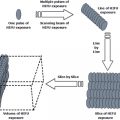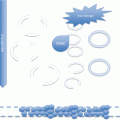3.
Mellman I, Coukos G, Dranoff G (2011) Cancer immunotherapy comes of age. Nature 480:480–489PubMed
4.
Klein O, Schmidt C, Knights A, Davis ID, Chen W, Cebon J (2011) Melanoma vaccines: developments over the past 10 years. Expert Rev Vaccines 10:853–873PubMed
5.
Lesterhuis WJ, Haanen JB, Punt CJ (2011) Cancer immunotherapy—revisited. Nat Rev Drug Discov 10:591–600PubMed
7.
Apetoh L, Tesniere A, Ghiringhelli F, Kroemer G, Zitvogel L (2008) Molecular interactions between dying tumor cells and the innate immune system determine the efficacy of conventional anticancer therapies. Cancer Res 68:4026–4030PubMed
8.
Myc LA, Gamian A, Myc A (2011) Cancer vaccines. Any future? Arch Immunol Ther Exp (Warsz) 59:249–259
9.
Ahmed M, Brace CL, Lee FT Jr, Goldberg SN (2011) Principles of and advances in percutaneous ablation. Radiology 258:351–369PubMed
10.
Kepp O, Galluzzi L, Martins I, Schlemmer F, Adjemian S, Michaud M, Sukkurwala AQ, Menger L, Zitvogel L, Kroemer G (2011) Molecular determinants of immunogenic cell death elicited by anticancer chemotherapy. Cancer Metastasis Rev 30:61–69PubMed
11.
Prestwich RJ, Errington F, Hatfield P, Merrick AE, Ilett EJ, Selby PJ, Melcher AA (2008) The immune system—is it relevant to cancer development, progression, and treatment? Clin Oncol (R Coll Radiol) 20:101–112
12.
Van Der Most RG, Currie A, Robinson BW, Lake RA (2006) Cranking the immunologic engine with chemotherapy: using context to drive tumor antigen cross-presentation towards useful antitumor immunity. Cancer Res 66:601–604PubMed
13.
Nordenstrom BE (1978) Preliminary trials of electrophoretic ionization in the treatment of malignant tumors. IRCS J Med Sci 6:537
14.
Nordenstrom B (1984) Biologically closed electric circuits: activation of vascular interstitial closed electric circuits for treatment of inoperable cancers. Bioelectricity 3:137–153
15.
Berendson J, Simonsson D (1994) Electrochemical aspects of treatment of tissue with direct current. Eur J Surg Suppl 574:111–115PubMed
16.
Robertson GSM, Wemyss-Holden SA, Dennison AR, de la M Hall P, Baxter PS, Maddern GJ (1998) Experimental study of electrolysis-induced hepatic necrosis. Br J Surg 85:1212–1216PubMed
17.
Habal MB, Schauble MK (1973) Clinical device note: an implantable DC power unit for control of experimental tumor growth in hamsters. Med Instrum 7:305–306PubMed
18.
Humphrey CE, Seal EH (1959) Biophysical approach toward tumor regression in mice. Science 130:388–390PubMed
19.
Schauble MK, Habal MB, Gullick HD (1977) Inhibition of experimental tumor growth in hamsters by small direct currents. Arch Pathol Lab Med 101:294–297PubMed
20.
Morris DM, Marino AA, Gonzalez, E (1992) Electrochemical modification of tumor growth in mice. J Surg Res 53:306–309PubMed
21.
Heiberg E, Nalesnik WJ, Janney C (1991) Effects of varying potential and electrolytic dosage in direct current treatment of tumors. Acta Radiol 32:174–177PubMed
22.
Samuelsson L, Jonsson L, Lamm IL, Lindén CJ, Ewers SB (1991) Electrolysis with different electrode materials and combined with irradiation for treatment of experimental rat tumors. Acta Radiol 32:178–181PubMed
23.
Chou CK, McDougall JA, Ahn C, Vora N (1997) Electrochemical treatment of mouse and rat fibrosarcomas with direct current. Bioelectromagnetics 18:18–24
24.
Turler A, Schaefer H, Schaefer N, Wagner M, Maintz D, Qiao JC, Hoelscher AH (2000) Experimental low-level direct current therapy in liver metastases: influence of polarity and current dose. Bioelectromagnetics 21:395–401PubMed
25.
Wemyss-Holden SA, Robertson GSM, de la M Hall P, Dennison AR, Maddern GJ (2000a) Electrolytic treatment of colorectal liver tumor deposits in a rat model: a technique with potential for patients with unresectable liver tumors. Dig Dis 18:50–57
26.
Dennison AR, Maddern GJ (2000) A new treatment for unresectable liver tumors: long-term studies of electrolytic lesions in the pig liver. Clin Sci 98:561–567PubMed
27.
Wemyss-Holden SA, de la M Hall P, Robertson GS, Dennison AR, Vanderzon PS, Maddern GJ (2000b) The safety of electrolytically induced hepatic necrosis in a pig model. Aust N Z J Surg 70:607–612
28.
Wemyss-Holden SA, Dennison AR, Finch JG, de la M Hall P, Maddern GJ (2002) Electrolytic ablation as an adjunct to liver resection: experimental studies of predictability and safety. Br J Surg 89:579–585PubMed
29.
Telló M, Oliveira L, Parise O, Buzaid AC, Oliveira RT, Zanella R, Cardona A (2007) Electrochemical therapy to treat cancer (in vivo treatment). Conf Proc IEEE Eng Med Biol Soc 2007:3524–3527PubMed
30.
von Euler H, Strahle K, Yongqing G (2004) Cell proliferation and apoptosis in rat mammary cancer after electrochemical treatment (EChT). Bioelectrochemistry 62:57–65PubMed
31.
Gravante G, Ong SL, Metcalfe MS, Bhardwaj N, Maddern GJ, Lloyd DM, Dennison AR (2011) Experimental application of electrolysis in the treatment of liver and pancreatic tumors: principles, preclinical and clinical observations and future perspectives. Surg Oncol 20:106–120PubMed
32.
Nordenstrom BE (1989) Electrochemical treatment of cancer. I: Variable response to anodic and cathodic fields. Am J Clin Oncol 12:530–536PubMed
33.
Nordenström BE, Eksborg S, Beving H (1990) Electrochemical treatment of cancer. II: Effect of electrophoretic influence on adriamycin. Am J Clin Oncol 13:75–88PubMed
34.
Lao YH, Ge TG, Zheng XL, Zhang JZ, Hua YW, Mao SM, Feng X (1994) Electrochemical therapy for intermediate and advanced liver cancer: a report of 50 cases. Eur J Surg (Suppl 564):51–53
35.
Xin Y (1994a) Organization and spread of electrochemical therapy in China. Eur J Surg (Suppl 574):25–29
36.
Xin YL, Xue FZ, Ge BS, Zhao FR, Shi B, Zhang W (1997) Electrochemical treatment of lung cancer. Bioelectromagnetics 18:8–13PubMed
37.
Xin YL (1994b) Advances in the treatment of malignant tumors by electrochemical therapy (EChT). Eur J Surg (Suppl 574):31–35
38.
Berry D, Dennison AR, Ward R, Maddern GJ (2000) Electrolytic ablation of colorectal metastases: 1-year histological patient follow-up. Dig Surg 17:518–519PubMed
39.
Fosh BG, Finch JG, Lea M, Black C, Wong S, Wemyss-Holden S, Maddern GJ (2002) The use of electrolysis as an adjunct to liver resection. Br J Surg 89:1–6
40.
Nilsson E, von Euler H, Berendson J, Thorne A, Wersall P, Naslund I, Lagerstedt AS, Narfstrom K, Olsson JM (2000) Electrochemical treatment of tumors. Bioelectrochemistry 51:1–11PubMed
41.
Wemyss-Holden SA, Dennison AR, Berry DP, Maddern GJ (2004) Local ablation for unresectable liver tumors: is thermal best? J Hepatobiliary Pancreat Surg 11:97–106PubMed
42.
Keisari Y, Korenstein R (2011) Antitumoral effects of pulsed low electric field enhanced chemotherapy: lessons from experimental malignant tumors. In: Spugnini EP, Baldi A (eds) Electroporation in laboratory and clinical investigations. Nova Science Publishers Inc, New York
43.
Antov Y, Barbul A, Korenstein R (2004) Electroendocytosis: stimulation of adsorptive and fluid-phase uptake by pulsed low electric fields. Exp Cell Res 297:348–362PubMed
44.
Antov Y, Barbul A, Mantsur H, Korenstein R (2005) Electroendocytosis: exposure of cells to pulsed low electric fields enhances adsorption and uptake of macromolecules. Biophys J 88:2206–2223PubMed
45.
Barbul A, Antov Y, Rosenberg Y, Korenstein R (2009) Enhanced delivery of macromolecules into cells by electroendocytosis. In: Belting M (ed) Macromolecular drug delivery—methods in molecular medicine, vol 480. Humana Press, New York, pp 141–150
46.
Rosenberg Y, Korenstein R (1997) Incorporation of macromolecules into cells and vesicles by low electric fields: induction of endocytotic-like processes. Bioelectrochem Bioenerg 42:275–281
47.
Entin I, Plotnikov A, Korenstein R, Keisari Y (2003) Tumor growth retardation, cure, and induction of antitumor immunity in B16 melanoma bearing mice by low electric field enhanced chemotherapy. Clin Cancer Res 9:3190–3197PubMed
Stay updated, free articles. Join our Telegram channel

Full access? Get Clinical Tree





